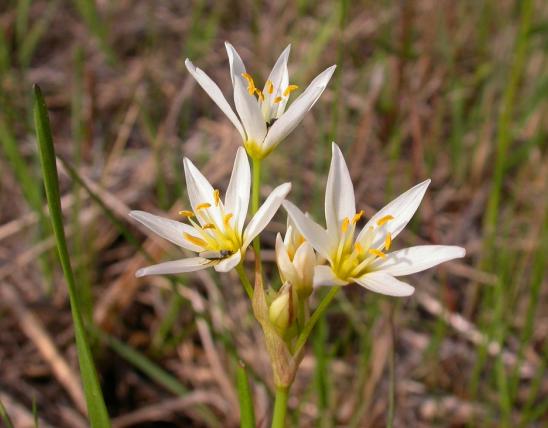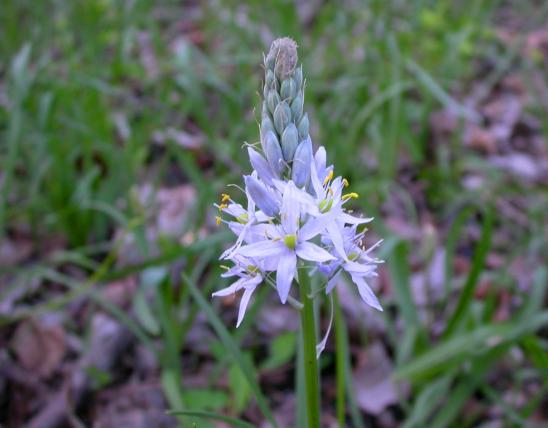
Wild onion is a perennial, growing from a bulb, with the odor of onion or garlic. Flowers in umbels (the flowers all arising from the tip of the stalk) that are held erect at flowering (not drooping), each flower resembling a 6-pointed star with the petals spreading widely, pink (sometimes white), showy. Blooms July–November. Leaves basal, narrow, flat.
Similar species: Nodding wild onion (A. cernuum) is found in the same region and habitats. It is distinguished by its nodding (not erect) flowerheads and, especially, by its bell-shaped (not broadly spreading) flowers. It also tends to flower earlier in the season (June–September).
Height: stalks to 12 inches.

Mainly south of the Missouri River; absent from the Bootheel. Scattered in the Ozark and Ozark Border divisions, locally north to Lincoln, Boone, and Pettis counties.
Habitat and Conservation
Glades and exposed bluffs, openings of dry upland forests, mostly on calcareous substrates; also on rocky roadsides. This is the characteristic summer-blooming wild onion in the Ozarks. Its relative, nodding wild onion (A. cernuum), is also found in the Ozarks, in much the same habitats, but it is less common.
Human Connections
Our wild onions are edible and can be eaten as a vegetable, seasoning, or pickled. To ensure you don't accidentally eat an extremely poisonous relative, make sure all parts of the plant have a strong onion smell. All wild onions and garlics arise from bulbs and have flowers in umbels.
Ecosystem Connections
Small bees and flower flies visit the showy flowers, but the onion-flavored oils make the leaves unpalatable to most mammals. When cattle eat it as they graze, the milk they produce can take on an oniony flavor.





























